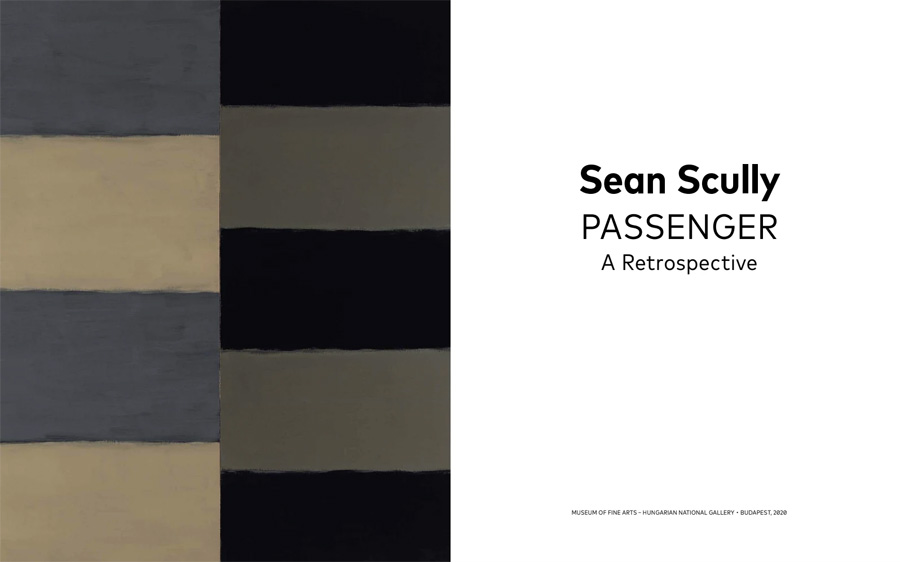14/10 2020 – 30/5 2021
Curator | David White
Hungarian National Gallery | Budapest | Hungary
For the first time in Central and Eastern Europe, the Hungarian National Gallery presents a major retrospective of Irish-American artist Sean Scully. One of the most important contemporary exponents of abstraction, whose art is simultaneously characterised by formal reduction and referential richness, Scully developed a peculiar pictorial language based on a sophisticated synthesis of seemingly opposing qualities. In addition to the paintings, the exhibition features work than a hundred works on paper, sculptures and photographs. An interpretation of each piece, on the walls and shelves, is complemented by the artist’s own writings, notes and sketches.
The exhibition covers all the defining periods of the oeuvre, from the early figural experiments of the 1960s to the minimalist formal language of the 1970s, to the plastic works created from the expressive bands of the 1980s ( Adoration , 1982) to workshops associated with window and wall motifs. ( Window figurine , 2002), to the artist’s specific interpretations of the landscape ( Landscape series, Light Walls series), and all the way to the recent figural turn ( Madonna-series). Loosely following the chronology, the exhibition presents the most important groups of the oeuvre in thematic units, how Scully “opened up” the abstraction to objective references and metaphorical contents. Outstanding works in the exhibition include one of the artist’s most recent paintings, The Black Square (2020), which returns to the icon of “pure feeling” painted by Kazimir Malevich. In the picture – presented to the public for the first time by the Hungarian National Gallery – the Malevich motif is wedged into the glow of the “romantic landscape” as a black hole: as an objectification of almost tangible Nothing, a contemporary metaphor for a situation laden with existential anxieties.
In addition to the monumental paintings, the exhibition of about one hundred and ten Scully works includes paperwork, as well as sculptures and photographs. The interpretation of the works – on the walls and in the shelves – is aided by the artist’s own writings, notes and sketches. Dialogue with the art historical past is key to the interpretation of the oeuvre. Separate sections deal with the artist’s reflections on defining artists such as Vincent van Gogh and Pierre Bonnard. The fabric of the exhibition also includes a Bonnard painting from the collection of the Museum of Fine Arts, further nuancing the dialogue with the history of painting.
The exhibition title is a strange beauty series Scully, the Transit quoted -festményeket. In the works, another image ( inset with the artist’s expression ) is wedged into the image base , which in each case slips away from the vertical axis of symmetry of the composition. It was as if it had moved, as if it were in motion. The inset s lingers construed, as figures in motion, as a lone human figures which pass through the horizon. “The inset, that is, the inner, is a passer-by in a larger structure that allows the mother and child to be associated with something that is held and protected by a larger thing,” the artist put it. The journey and the association of mother and child make the image plane and the inset a kind of life metaphor.his relationship: Scully shows the path and evolution of time-changing shapes and forms, the modification of constellations in his works. All this is related to personal experiences and memories: perhaps it also refers to the role of travel and emigration in the life of an Irish-born artist who grew up in England, then settled in America and later returned to Europe from time to time.
Scully has developed a kind of emotional geometry over the years, characterized by the dynamics of instinct and intellectual reflection. The exhibition examines how Scully reinterprets the traditions of abstraction and expands her concept: from the perspective of her art, we can look at the history of painting and classical works differently.
